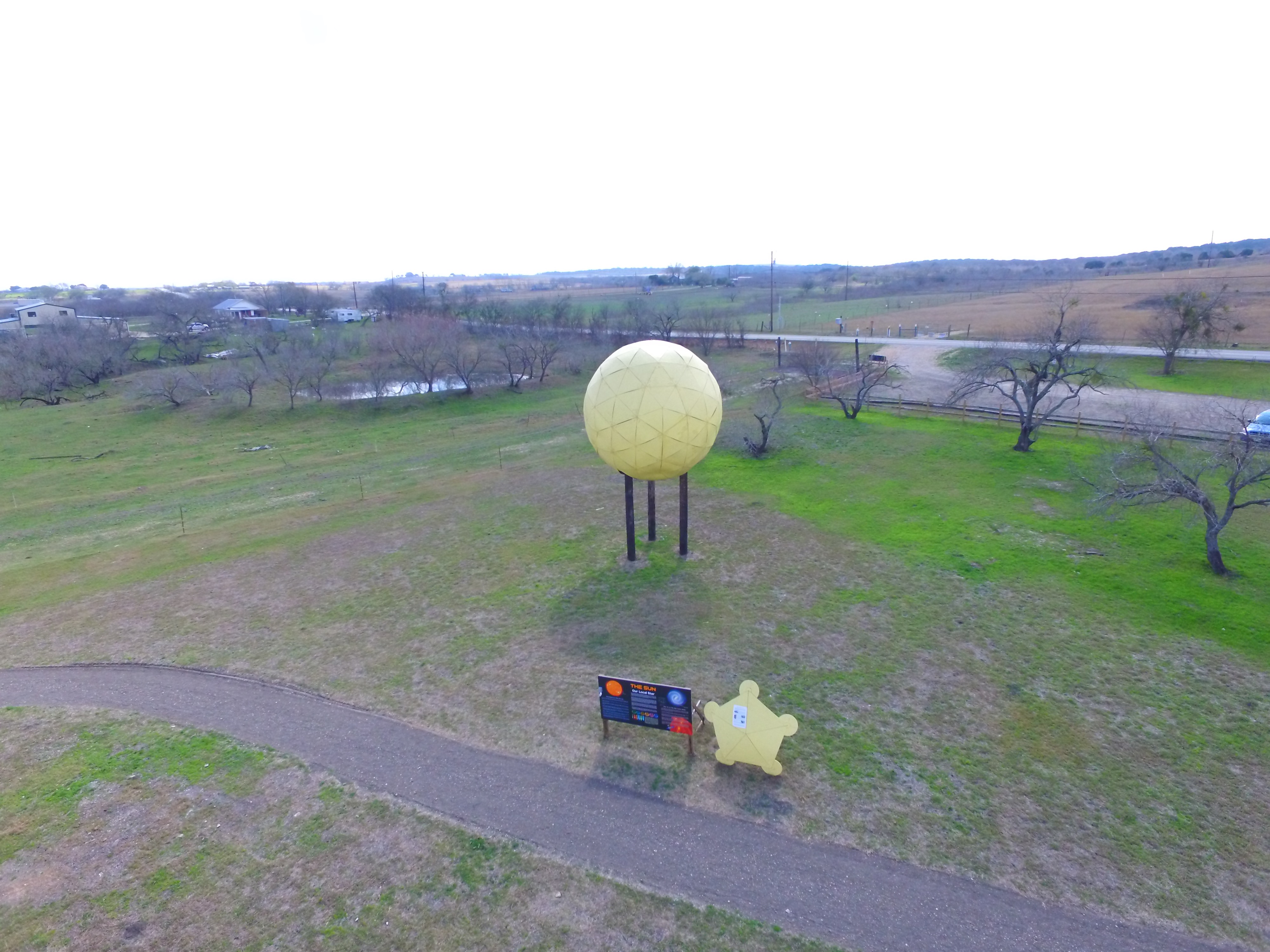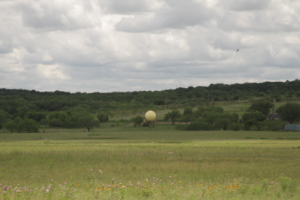

Available at:
Amazon.com
BarnesAndNoble.com
Search ISBN: 9780977649778

SpaceTime Park is now permanently closed, but you can still take a virtual tour here.
SpaceTime Park was the brainchild of Ron Toms, concieved with the help of middle-school teachers as a field trip destination and weekend sight-seeing venue. It was designed to be an immersive experience for the kids. A place where they could learn real science about the planets, space travel, environmental issues and more. After a year and a half of research, planning and construciton, we opened the park for our first school field trips and weekend tourists.
Our main attraction was an exact 250 million-to-one scale model of the inner solar system, one kilometer long from the Sun to Mars. At that scale the speed of light is 2.678 miles per hour--walking speed for a child.




































